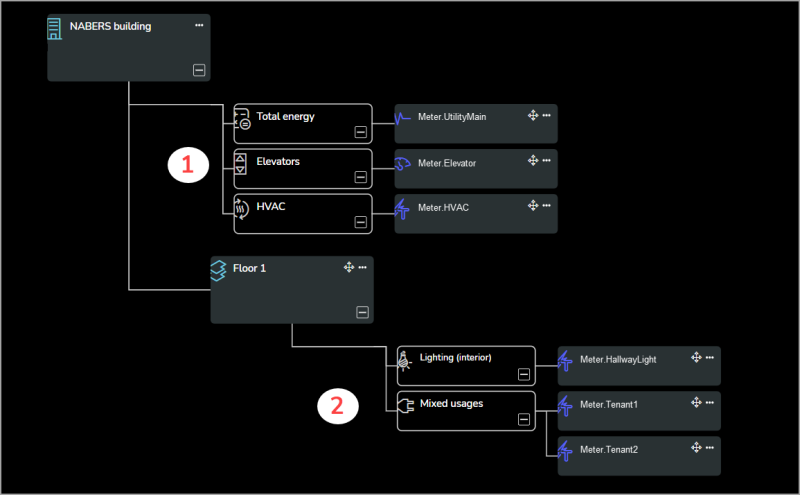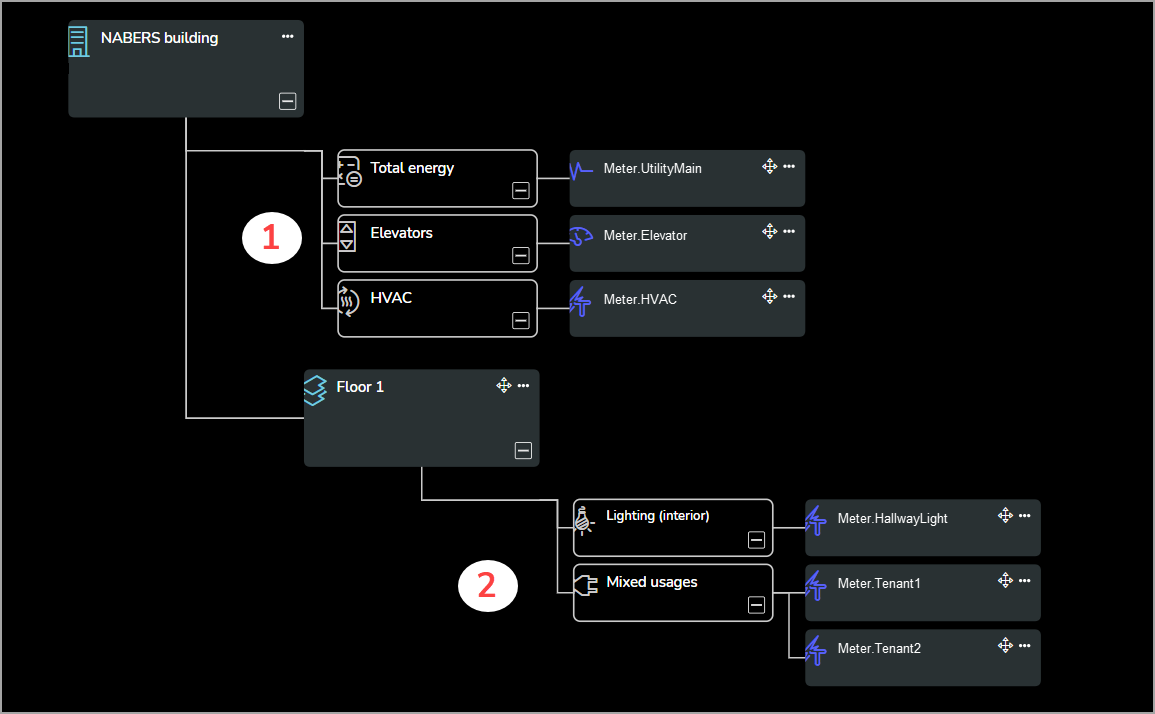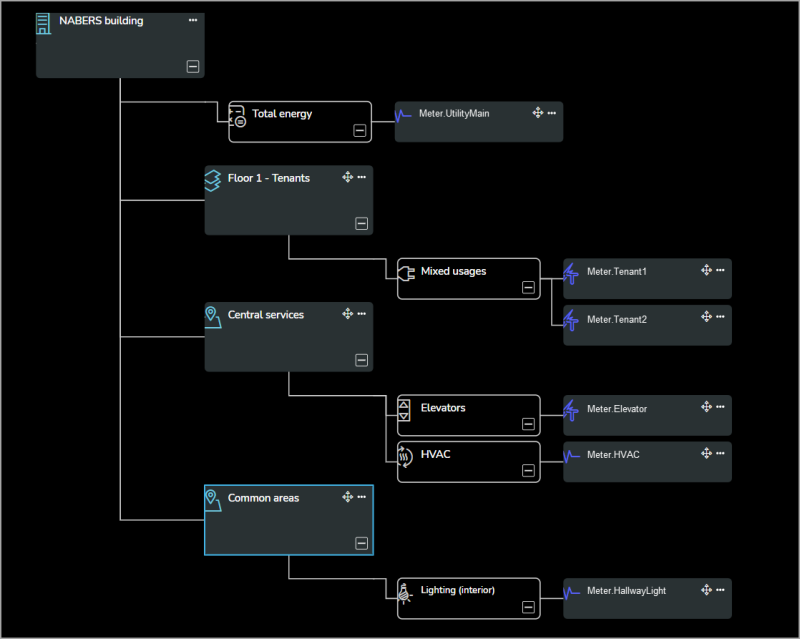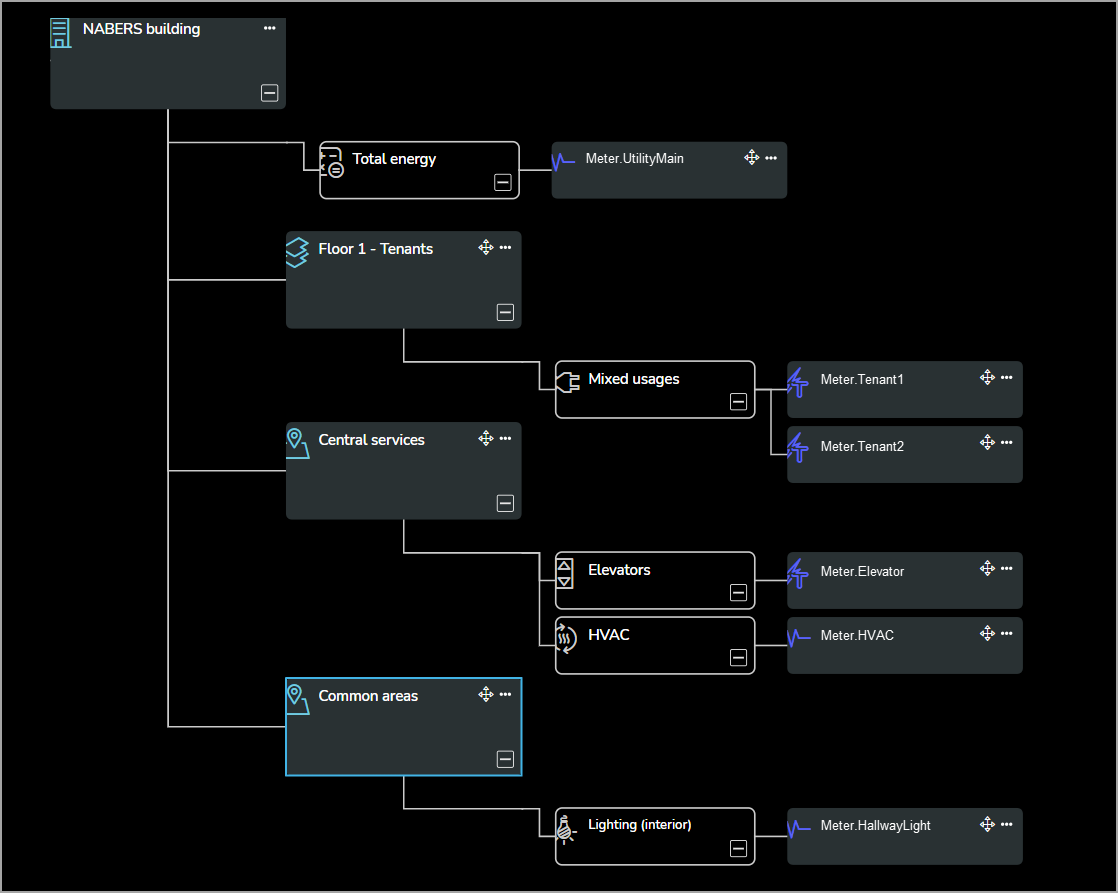Organizations
[Web app and mobile app]
An organization in Energy Hub is a logical entity that represents your facilities. You set up an organization to model your facility, energy networks, loads, and energy usage types based on how you manage them. The organization model includes locations, equipment and monitoring devices that are providing the measurement data for the loads and supplies in your facility. An organization has a name, an image icon, and users. A well defined organization makes it easy for you to set user roles and access permissions. It also results in automatically created information views that match how you run your facility.
Energy Hub uses the organization model to analyze and aggregate the energy data and to present the results. For example, you can investigate issues based on your facility layout, such as sites and buildings, or based on usage types, such as heating or lighting.
Regions, sites, and site locations define the physical layout of your facilities in the organization model. How detailed you need to model your facilities depends on your type of business, the installed monitoring devices, and how detailed you want the energy information to be.
You can use the following elements to build the model:
- Region (A large geographical area, for example state, province, country)
- Site (A specific location, with a street address)
- Building
- Floor
- Area
- Space
- Production Line
- Zone
Your model can include one or more of each of these elements.
NOTE: You need to define at least one site in your organization model to use Energy Hub.
Example organization:
| Organization name | – | Mindt Chocolates |
| Region | – | Canada |
| Site | – | Halifax Factory |
| Building | – | Main Building |
| Floor | – | Factory Floor |
| Production Line | – | Dark Chocolate Preparation |
Consider the following recommendations for setting up organizations when using NABERS in Energy Hub:
Organization setup for NABERS
If you are using the NABERS functionality in Energy Hub, consider setting up your buildings in the organization model with clearly defined locations for central services, common areas, and tenant spaces. This makes it possible to use Energy Hub data, instead of manually entered data, when creating NABERS ratings.
Organization model best practices for NABERS:
- Create child locations for a building (floors, areas, zones, ...) to represent the NABERS relevant spaces (central services, common areas, and tenant spaces).
- Have monitoring devices installed that provide consumption data for these spaces.
- Do not add loads directly to the building location in the model.
The following shows two simplified examples of organization models. Example 1 shows a setup where Energy Hub consumption data cannot be used to generate a NABERS rating. Example 2 shows a setup that makes it possible to use Energy Hub consumption data with NABERS.
Example 1 – The organization is not set up for use with NABERS


NABERS incompatibility:
1 – Central building services are assigned to the building location and not to separate child locations.
2 – Common areas are combined with tenant spaces and are not assigned to separate child locations.
Example 2 – The organization is correctly set up for use with NABERS


You can perform the following organization management tasks:
- Create an organization
- Edit the organization profile
- Switch between organizations
- Change the currency for an organization
- Add regions or sites
- Configure sites
- Enter a street address for a location
- Move locations, equipment, or monitoring devices
- Delete regions, sites, or other locations
For step-by-step instructions on organization management, see organization model tasks.